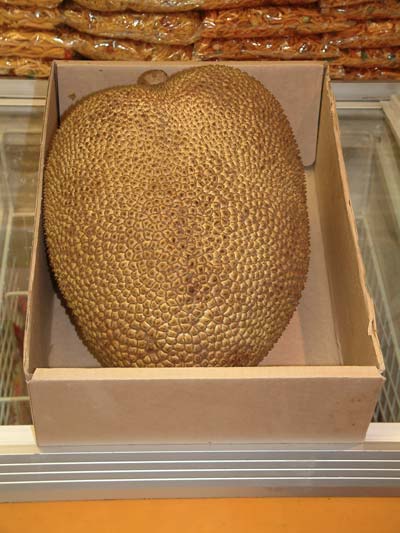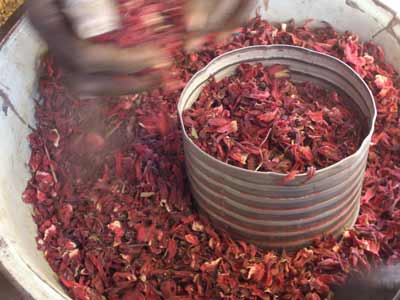The husks of the seeds of Plantago ovata, psyllium. They are used as an ingredient of natural laxatives. In India they are used in the long, cool drinks available in India. They absorb the flavours of the drink and take on a jelly-like consistency.

Jack fruit. The fruits can be enormous, up to 1 meter (3 ft) in length and weigh as much as 100 lb (45 kg). For this reason they are most often sold ready cut, in sections. The colour of the flesh varies with the variety, and can be anything from yellow to pink. They grow in the Western Ghats range of mountains. When the fruits are immature, they provide a starchy vegetable which needs to be cooked. When ripe, they are sweet, with a strong flavour. The section should be set on a board and the thickened heart cut out. This means cutting it across ways, about half way down, below the internal stem.The flesh can then be pulled away in hunks enclosing seeds. The seeds can be peeled and cooked and have a flavour of chestnuts. The hunks of flesh which held the seeds can be stuffed with sweet fillings. In appearance they are light green, ripening to yellow brown, and covered in hard, knobbly spines.

Hibiscus flower. It is either made into long cooling drinks or can be dipped in batter and fried, in the same way as courgette (US: zucchini) flowers.
A spirit from Goa distilled from cashew nuts. Cashews are squeezed to extract sweet "niro". This is fermented and then transferred to an earthenware pot in which it is boiled and distilled. The first distillate is called "urak", with a low alcohol content. The next distillate is feni.